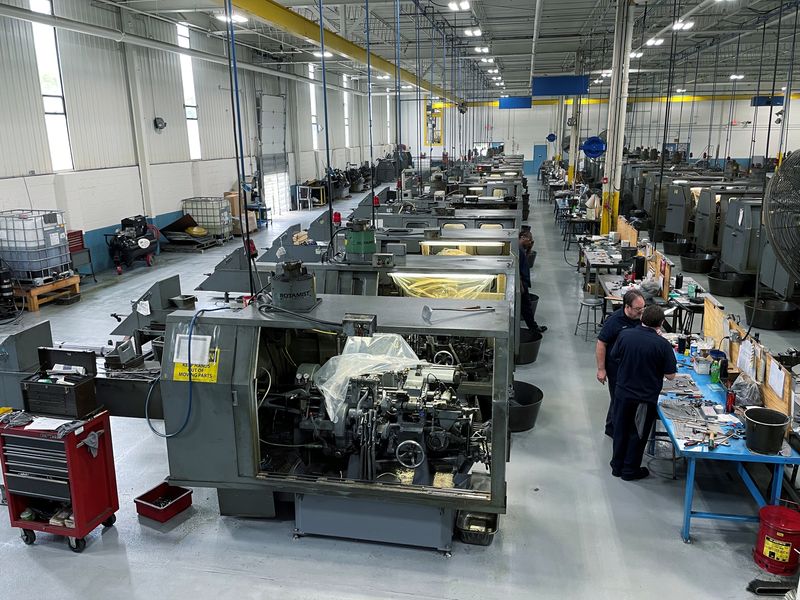By John Kemp
LONDON (Reuters) -U.S. manufacturing activity has shown little or no growth in the last year as businesses struggle with lacklustre consumer spending on merchandise and excess stocks built up after the pandemic supply chain disruptions.
Despite rhetoric about a manufacturing renaissance there has been little impact on manufacturing output or employment once the post-pandemic rebound was completed by the middle of 2022: * Production was down by almost 0.8% in September comparedwith the same month a year earlier and had risen a total of just1.2% in the last four years, according to estimates prepared bythe Federal Reserve. * Jobs were up 0.6% in September compared with the samemonth a year earlier and increased just 1.3% over the last fouryears, according to the Bureau of Labor Statistics. * New orders for nondefence capital goods excluding aircraft(a proxy for business equipment spending) have been unchanged innominal terms since the middle of 2022.
Flat-lining manufacturing activity is reflected in the absence of growth in freight movements, which are dominated by manufactured products as well as raw materials and farm goods: * Total freight movements by road, rail, barge and pipelinewere down 1.8% in September compared with a year earlier and upjust 0.7% compared with four years ago. * The biggest container ports handled 1.5% more shippingcontainers in September than a year earlier and 2.5% more thanin September 2019. * But the major railroads hauled slightly fewer containersthan a year ago and 11% fewer containers than four yearsearlier. * On the roads, trucking firms moved 4% less freight than ayear ago and 2% less than four years ago, confirming theslowdown.
The strong growth in manufacturing activity between the middle of 2020 and middle of 2022 was a rebound following the disruption caused by the first wave of the coronavirus pandemic and associated lockdowns.
Since then spending has rotated back towards services and there has been little if any expansion in the manufacturing sector.
Chartbook: U.S. manufacturing activity
Lack of growth is evident in industrial energy consumption.
Three-quarters of all distillate fuel oils such as diesel are consumed in freight and manufacturing, according to data from the Energy Information Administration.
But there has been essentially no growth in distillate consumption in the last 12 months and a slight fall in the last four years, confirming the plateau in manufacturing activity.
U.S. manufacturers have done better than counterparts in Europe (hit by surging energy prices) and China (struggling with tepid demand after the end of the pandemic).
But the sector is still struggling to generate growth in contrast to the much stronger performance of the services sector once social distancing and movement controls were lifted after the pandemic.
Related columns:
- U.S. manufacturers stumble in setback for diesel demand (November 3, 2023)

- Global container freight stuck in doldrums (June 23, 2023)
John Kemp is a Reuters market analyst. The views expressed are his own. Follow his commentary on X, formerly Twitter: https://twitter.com/JKempEnergy